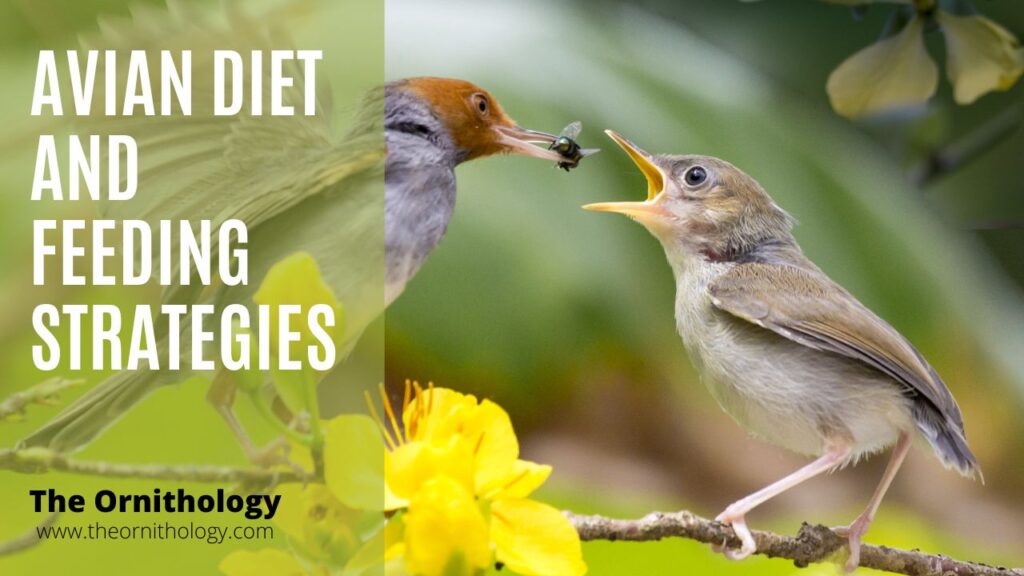Beak Shapes and Functions

Birds exhibit a remarkable diversity of beak shapes and sizes, each adapted to their specific dietary preferences and feeding strategies. The beak serves as a versatile tool for capturing, manipulating, and consuming food.
- Conical Beaks: Conical beaks are versatile and adapted for a generalist diet, allowing birds to eat a wide range of foods, including seeds, insects, and fruits.
- Hooked Beaks: Hooked beaks are found in birds of prey and are designed for tearing apart meat and consuming prey.
- Long Probing Beaks: Birds with long, slender beaks, such as hummingbirds and woodpeckers, use them for probing flowers, tree bark, and crevices to extract nectar, insects, and sap.
- Serrated Beaks: Serrated beaks, as seen in some species of ducks and herons, help capture and hold onto slippery aquatic prey like fish.
Carnivorous, Herbivorous, and Omnivorous Birds
Birds have evolved to occupy a wide range of dietary niches:
- Carnivorous Birds: Raptors such as eagles, hawks, and owls are carnivorous, hunting and capturing live prey. They use their sharp beaks and talons to grasp and tear apart their prey.
- Herbivorous Birds: Birds like parrots, pigeons, and finches primarily consume plant-based diets, including seeds, fruits, and vegetation.
- Omnivorous Birds: Many birds, like crows, sparrows, and gulls, have omnivorous diets. They eat both plant and animal matter, taking advantage of a variety of food sources.
Feeding Techniques: Predation, Foraging, and Scavenging
Birds use various techniques to acquire food based on their dietary preferences:
- Predation: Carnivorous birds are skilled predators, using their keen senses to locate, stalk, and capture prey. Raptors use their powerful talons to immobilize and kill their prey.
- Foraging: Birds that feed on insects, seeds, or fruits engage in foraging behaviors. They search their surroundings for food items, using beak manipulation and body movements to extract and consume them.
- Scavenging: Scavengers, like vultures and seagulls, feed on carrion or discarded food. Their beaks and digestive systems are adapted to process a wide range of foods, including decomposed matter.
Understanding avian feeding strategies sheds light on how birds have adapted to different ecological niches and diversified their diets over time. Their beaks, behaviors, and feeding techniques provide insights into the intricate relationships between birds and their food sources.
Frequently Asked Questions (FAQ) – Avian Diet and Feeding Strategies
How do beak shapes relate to a bird’s diet?
Beak shapes are closely tied to a bird’s dietary preferences and feeding strategies. Conical beaks are versatile for generalist diets, hooked beaks are for tearing meat, long probing beaks are for reaching into crevices, and serrated beaks help with capturing aquatic prey.
What are some examples of carnivorous birds?
Carnivorous birds include eagles, hawks, owls, and falcons. These raptors hunt live prey using sharp beaks and talons, and they often have excellent vision for locating their targets.
Can herbivorous birds eat anything other than plants?
While herbivorous birds primarily consume plant-based diets, some species may occasionally consume insects or other small animals for additional protein.
What’s the advantage of being an omnivorous bird?
Omnivorous birds have more flexibility in their diet, allowing them to adapt to changing food availability. They can switch between plant and animal foods depending on the season and environmental conditions.
How do birds that probe for insects or nectar find their food?
Birds with long probing beaks, like woodpeckers and hummingbirds, use their beaks to explore crevices, flowers, and bark. Their specialized beak shapes allow them to access hidden food sources.
How do scavengers like vultures find their food?
Scavengers have keen senses that help them locate carrion from a distance. They use their sharp eyesight and olfactory senses to detect the scent of decaying matter.
What’s the difference between predation and foraging?
Predation involves hunting and capturing live prey, often involving stalking and immobilizing techniques. Foraging, on the other hand, is the act of searching for and gathering food from the environment, such as insects, seeds, or fruits.
How do birds benefit from different feeding strategies?
Different feeding strategies allow birds to exploit various food sources and ecological niches. These strategies have evolved over time to help birds efficiently gather nutrients and energy from their environments.
Can a bird’s diet change throughout its life?
Yes, a bird’s diet can change based on factors like season, availability of food, and developmental stage. Juvenile birds often have different dietary preferences compared to adults as they learn to forage and find suitable foods.
How do birds with specialized diets find enough food?
Birds with specialized diets often have adaptations that help them locate their specific food sources. For example, hummingbirds have excellent memories for flower locations, and birds of prey have acute vision to spot prey from high vantage points.
